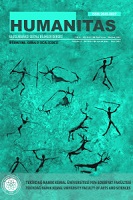Türk Sanatında Kadın Bedeninin İkonografik Açıdan Değerlendirilmesi
Iconographic Evaluation of The Woman Body in Turkish Art
Author(s): Ayşegül Zencirkiran, Yunus BerkliSubject(s): Gender Studies, Visual Arts, Sociology of Culture, Sociology of Art
Published by: Namık Kemal Üniversitesi Fen-Edebiyat Fakültesi
Keywords: Turkish woman; woman body; holy woman; woman iconography;
Summary/Abstract: The mother goddess cult, which developed in parallel with the matriarchal family order of the prehistoric period, was formed with the idea of accepting the mysterious/divine biological characteristics of a woman that cannot be made sense of. As a result of this perception, the organs of a woman associated with childbirth, attributed to holiness are emphasized on works of art, and we come across bodies with large breasts and hips, sagging belly, called steatopic, such as in Cybele or Venus. This perception, which persists in historical periods as well as Göbekli tepe and prehistoric periods has also been reflected in Turkish Culture and Art, and these female figures have been used both before Islam and during a wide period of time covering the Islamic period, despite the understanding of privacy of this religion. Contrary to this idea, it is understood that, except for people and events of sacred origin, women belonging to the upper-class dress more conservatively than their servants or concubines, and even covering their entire bodies, including the face, is reserved only for ladies. Within the scope of our topic, rock and wall paintings, sculptures belonging to Turkish Art, these women's bodies reflected on coins will be evaluated.
Journal: Humanitas - Uluslararası Sosyal Bilimler Dergisi
- Issue Year: 11/2023
- Issue No: Spec. Iss.
- Page Range: 438-455
- Page Count: 18
- Language: Turkish

